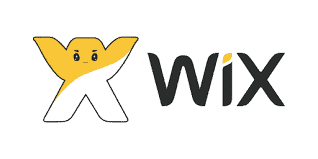Blogging is a great way to flex your writing skills, express your creativity and really explore topics that you’re passionate about.
They come in all shapes and sizes, from photography, craft, and interior design blogs, to marketing, business and motivational blogs.
It’s said that somewhere in the world, a new blog is created every half second, adding to over 152,000,000 websites that all have something important to say.
But where is the best place to start a blog when you’re new to the blogosphere?
Everyone has an opinion on what the best platform to start your new blog from is.
Usually, it’s the same one that most bloggers use, however, there are a lot more places out there that offer a base to start your blog that you might not have heard of.
Today I’m going to share ten blogging platforms , where to start a blog, and make money that are worth checking out.
Have a browse of each, check out their features and really explore the options before you make your decision.
Where To Start A Blog (Overview)

- One of the most popular CMS on the internet
- Easy to set up at a very minimal cost
- Huge amount of themes, plugins and developer support
- Incredibly scalable, unlike many other free blog sites

- User-friendly and hassle-free interface and design
- More than 200 templates for quickly setting up a website
- Free hosting with every plan - includes CDN and automatic updates
- Native eCommerce integration makes selling products easy
10 of the Best Places to Start a Blog
1 – WordPress
I’m starting with WordPress because it’s probably one of the one’s you’ve most likely heard of.
WordPress is one of the leaders in the blogging platform industry, with two versions based on your needs.
WordPress.com is its free blogging platform. Users can sign up and create a blog in just a few minutes.
There’s the ability to buy your own domain name if you’re not happy with a WordPress.com one and a range of free themes to make your blog look the business.
Other options include the ability to buy premium services, including premium themes, fonts and color options.
Not only that, but when you decide to incorporate a Twitter or Facebook page for your business or blog, then there are an abundance of plugins that work with popular social media platforms.
These will further customize the look and feel of your blog and set it apart from other free WordPress users.
However, I don’t recommend WordPress.com. I’ve had too many clients complain when they want to add a cool plug-in or change to a paid theme (neither can be done on WordPress.com)
WordPress.org is for bloggers looking to self-host their own site and I highly recommend it.
Users can install it via their hosting service and make use of much more functionality than the dot com option.
This includes complete customization over your website, a massive library of free WordPress themes, along with thousands of plugins to add elements such as optin forms, social sharing buttons and much more.
2 – Blogger
Another blogging platform you’ve probably heard of, Blogger is Google’s version of blogging on the web.
The blogger service is free with optional premium extras such as your own domain name.
It allows you to use many of the free apps that Google offer such as Feedburner and Networked Blogs while giving you control over how your blog looks.
Blogger’s interface is pretty straightforward to use, however, lacks the functionality that a WordPress blog offers. If you’re after something easy to use, straight out of the box, however, it’s a good place to start.
But you’ll want to have a self-hosted blog in the near future so it may be better to just start with the other options.
3 – Squarespace
Squarespace is relatively new to the blogosphere, however, its influence is steadily growing rapidly.
Rather than letting you get on with the work of updating and fiddling around with your blog settings, Squarespace offers a complete package including:
- Domains
- Hosting
- Websites
- Commerce
- And 24/7 Support
They offer a range of beautiful designs for your website, all of which are optimized for mobile devices and included in your package.
They’re probably some of the most beautiful designs I’ve seen on a site!
You can try Squarespace out for free for 14 days to see if you like it.
After that prices start at just $8 per month, with pricier packages depending on your needs. It is one of my favorite places to recommend to my new blogger clients!
4 – Dropplets
Dropplets is a blog platform that’s a little different from the ones I’ve mentioned so far.
What’s unique about it is that it’s free to use and open source – meaning you can play about with it and improve it if you want to.
To use Dropplets you simply have to upload it to your hosting server, load your website in a browser and then follow some easy steps to get up and running.
Dropplets also uses the markdown text formatting syntax to make it easy to create your posts in any text editing software.
Once you’re ready to upload, all you need to do is mark your post as published and Dropplets will take of everything else – including the formatting.
5 – Postagon
Looking for something a bit easier?
This next platform has you covered.
Postagon has to be one of the easiest blog posting platforms I’ve come across.
Within a matter of seconds you can have your blog up and running, ready to publish your first post – I tried it myself and have to agree!
There’s no need to set up any hosting for Postagon – it’s all browser-based.
You don’t really need to do anything technical to start blogging, however, there are loads of extras if you want to customize things a little.
Some of the extras include:
- Your own domain name
- Google Analytics
- Post via email
- Drag and drop photo uploads
- Email subscribers
- RSS
- And social sharing
All it costs is $4 per month, which is a great deal for something that’s so easy to use.
6 – Svbtle
Svbtle is more of a psychological machine than a blogging platform. It’s extremely minimal and distraction-free and has been built with your brain in mind.
Instead of the average blogging dashboard you might find with something like WordPress or Blogger, Svbtle has only two columns.
On the left is a place for you to jot down your ideas.
These are saved as drafts for you to build upon, much like you would do with a series of thoughts.
On the right is a list of your published posts – giving you a clean, organized overview of your thoughts and work.
Creating a post within Svbtle is like writing on a white screen.
There’s no fussy editing icons and nothing to distract you from anything other than your writing.
When you sign up to Svbtle, you get 30 days blogging for free.
After that, it will cost $6 per month to use.
7 – Ghost
Ghost is another open source blogging platform that’s simple to use and which looks amazing.
Essentially as soon as you download the software, you own it and do whatever you like with it – such is the nature of open source software.
Ghost is free to download and use, however you’ll need your own hosting package to make use of it.
Thankfully the team behind Ghost offer a Ghost Pro package which they describe as a bit like a “gated community of ghost bloggers” for $5 per month.
It’s basically their own hosting and all the profit made through selling it, goes into the non-profit organization behind this great service.
Lastly Ghost has its own open marketplace.
This is a bit like a shop, but it includes both free and premium stuff like themes and templates to make your blog look shiny.
8 – Postach.io
If you’re a fan of Evernote, you’ll love this next blogging platform.
Postach.io is more of a cloud blogging service than a platform because it provides you with the ability to blog via your Evernote account.
Once you’ve signed up (with your Evernote account) and chosen your theme, you’re free to create your blog posts right from within Evernote.
To upload them to your blog, it’s just a case of tagging your posts with “published” and your content will be displayed beautifully on your site.
While Postach.io doesn’t come with a native comments system, you can integrate it easily with Disqus.
You can also publish items from apps like Pocket by tagging an item with “favorite” or create documents within Dropbox to publish.
You can also use a custom domain if you have one.
For multiple sites, multiple authors and other extra features, you can sign up for $5 per month as a Postach.io premium user.
Which isn’t that bad for added functionality.
9 – Medium
Next up we have Medium – a beautiful space to connect with the right audience who want to read your stuff.
It’s designed to be minimal, with the focus on your writing and is a great way to post updates and thoughts that don’t necessarily fit within 140 characters.
There’s no widgets, sidebars, plugins or distractions on Medium. Nothing to set up, complicate and generally distract you from your content.
Your content and images will automatically look better as the technology updates.
The main idea behind Medium, however, is to write alongside people instead of sitting on your own somewhere in the big wide internet ocean.
You get to exchange ideas and bump into people with the same mindsets, which is what makes this platform so unique.
10 – Scriptogram
Lastly we have Scriptogram, built for writers and storytellers wherever they are, to be invisible and inconspicuous.
Designed to only appear when you’re ready to publish, Scriptogram is similar to postachi.io in that it allows you to create your posts in your favorite editing apps, before syncing to your Scriptogram blog.
Store markdown files in Dropbox and then seamlessly sync to your Scriptogram folder and your post will be beautifully displayed on your blog.
Add your own domain if you want to.
Choose from any of the sleek, mobile-optimized themes.
Then write. Pure, simple writing from anywhere that takes your fancy.
Wrapping Up
Finding a blogging platform to start your writing goals with, isn’t as hard as it might seem at first.
Hopefully, some of the ideas I’ve shared with you today, have you eager to jump on board and blog your heart out.
The best tip I can give you, is to start small, get a feel for it all and then grow as you feel more comfortable.








